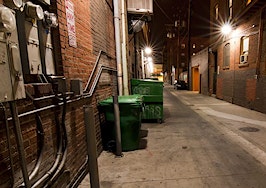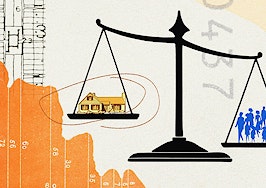- Yardi reported national average rent prices increased 5 percent in August compared with the same month last year.
- Chicago's forecasted rent growth by the end of 2016 is 2 percent.
- Chicago's annual job growth was 1.5 percent in June.
The multifamily rental market is starting to reflect the introduction of fall, cooling off but still growing. According to the Yardi Matrix Monthly report, which is a monthly measurement of 120 U.S. markets, August marked the eighth consecutive month of record rent prices.
Annually, national rent prices were up 5 percent but slipped 50 basis points from the previous month.

Sacramento was on one end of the spectrum, while Houston was on the other. Sacramento rent prices increased 11.9 percent annually, while Houston rent prices hardly moved from where they were in August 2015.
Orange County and Las Vegas were closest to the national average of 5 percent year-over-year rent growth.  When looking at the trailing annual year-over-year price changes, which is an average calculation of rent changes over a year, the national trailing 12-month change was 6 percent. Portland had the biggest jump, at 12.5 percent.
When looking at the trailing annual year-over-year price changes, which is an average calculation of rent changes over a year, the national trailing 12-month change was 6 percent. Portland had the biggest jump, at 12.5 percent.
In the 12-month trailing, Houston ranked in the last spot once again for the lifestyle asset class. However, the metro saw gains just below 6 percent for the renter-by necessity asset class, suggesting the slowdown in the rental market here could be fueled by a slowdown in higher end rental properties.
Rental market and economic conditions
Yardi experts report the forecasted rent growth for 2016 at 4.5 percent, and year-to-date stats are proving to be pretty strong. Job and income growth is certainly having a hand in the process, which is between about 2 percent and 3 percent, the report shows.
Naturally, regions seeing the quickest pull-back in rent growth are those that are seeing the slowest job growth, according to the report. Some areas that have seen extreme growth in recent years may start to pull back and moderate, like Portland, Austin and San Francisco.
In Chicago, the forecasted rent growth by the end of this year is 2 percent. Relatively low on the totem pole for growth, the Midwestern city is being held down largely by job growth, Yardi says. Chicago’s year-over-year job growth as of June 2016, using the six-month moving average, was 1.5 percent.
New inventory is also putting a damper on the market. Completions as a part of the total stock of inventory as of August 2016 was just 1.7 percent. Construction is hot in Chicago, though, so new inventory seems to be underway in popular neighborhoods like Fulton Market, West Town and Logan Square.
As of July 2016, the occupancy rate in Chicago was 96.2 percent, which was unchanged from the previous month.













